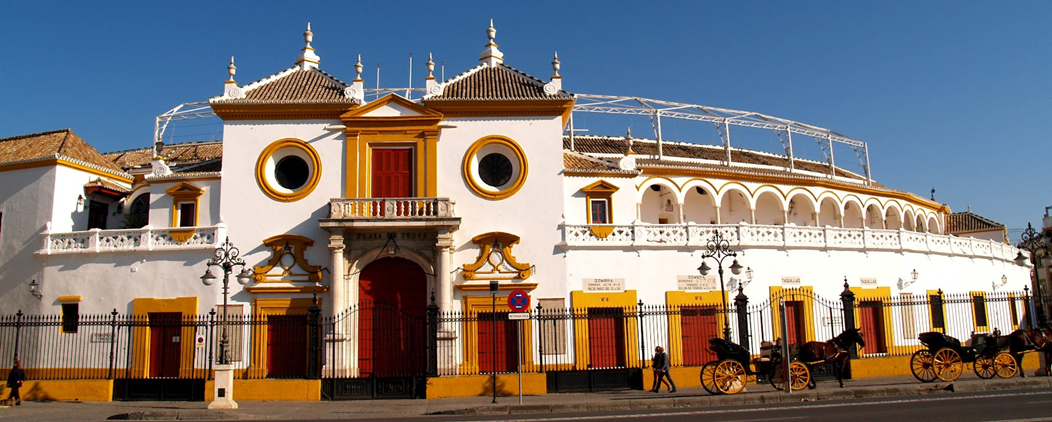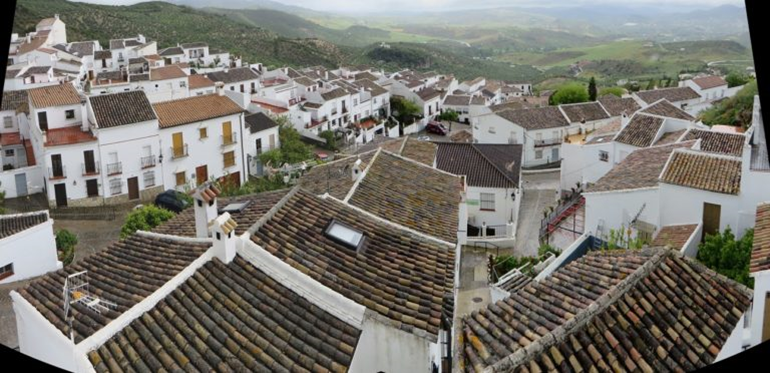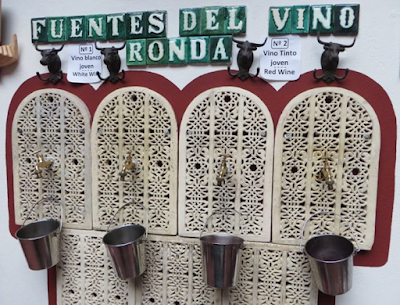Day 6 – Monday 9 May 2016 – Barcelona to Seville
We had been advised that the airport bus was the best way to the airport, and it starts about 300 metres from our hotel. I bought the six Euro tickets online and we headed off to the bus stop. In no time at all we were at the airport and checking in.
We were departing Barcelona with the knowledge that the residents are friendly and helpful people. They seem more passionate about their province of Catalonia than their country of Spain. Antonio Gaudi is a favourite son who brings significant revenue to the city. We had been fortunate to have an excellent hotel very close to nearly everything that we needed.
Our budget priced airline soon had us in Seville, a place where I got sunstroke in 1974. My possibly better wisdom may not come into play as the forecast for our time here makes sunstroke unlikely.
The airport bus soon has us into the middle of Seville and soon after we had booked into our lovely old hotel. All of the rooms opened onto a central area (see photo). We strolled into the shopping/dining part of Seville and were just seated for a late lunch before the heavens opened and people in the open ran for cover.
To appreciate the diversity of styles and architecture in Seville you need to appreciate that in turn Seville was ruled by the Romans, Muslims, then Christians. Evidence of all three are common in Seville.
It was a research afternoon as we planned the following three days. I had a Spanish lesson from a waiter in a small bar when we went for a walk. He was determined to make me order beer and white wine in Spanish, as well as normal civil greetings. We both had a lot of fun until it was time to say gracias and adios.
Macarena Arch and the Basilica of Macarena
Our walk took us through the Macarena Arch and passed the adjacent Basilica of Macarena – La Macarena being the traditional and historical name of the area of Seville.
Dinner was in another bar that did not start serving food until 8:30. It was our cheapest dinner of the trip so far.
Day 7 – Tuesday 10 May 2016 – Seville
The story goes that the rain in Spain falls mainly in the plain. Well not today, it fell in Seville. We set off with rain coats and umbrella and soon decided that a ride on the Hop-On Hop-Off bus was the way to go. So we did the circuit – saw lots of historical things – and were unable to take (reasonable) photos in the pouring rain. However, we enjoyed the tour and rewarded ourselves with a coffee and a Seville cookie.
I was able to get a photo of Torre del Oro (The Gold’s Tower) which was built as a fort to protect the city – and is now a museum, as well as Plaza de Toros – a bullfighting arena, and a charming old building that is now a shopping centre.
Torre del Oro (The Gold’s Tower)
As the rain got even heavier we sheltered in the El Corte Ingles department store. It has around five levels of quality merchandise. Shirley soon found her favourite section, but could not find anything to her liking.
It was time to head home – despite the rain – and a supermarket provided a bread stick, some ham and some cheese for a late lunch.
After some rest and recovery we went for a walk and ended up at a local eatery where we sat outside, had some drinks and ate some food. About 9pm we wandered home and decided the bed was inviting.
Day 8 – Wednesday 11 May 2016 – Seville
My second umbrella got even more use today as we set off for three major attractions and endured more rain than on previous days.
Our first attraction was the Royal Alcazar of Seville, which is palace that was built by the Muslims then converted by Christians when they ruled. It has strong Muslim/Arabic influences and gardens that are worth a visit on their own. The Spanish royal family still has apartments in Alcazar.
For a change in theme we then did a tour of Plaza de Toros, an active bull fighting stadium. Bull fights are conducted on a Sunday, or special days, and consist of three matadors each fighting two bulls. The bulls do not always lose, but usually. Bulls who survive are kept for breeding purposes as they are regarded as something special.
Posters advertising each event name the matadors and the bull farm who provides the bulls for that day. Prices are linked to the skill level of the matadors. Each year there is an “awards night” to present appropriate trophies to the matadors who deserve such accolades. Matadors are paid before the daily events start – in case they do not survive.
Our third visit for the day was to the Seville cathedral. This is a huge monument that was originally a Muslim Mosque built around 1184 to 1198. When Ferdinand III defeated the Muslims it was converted (and expanded) and became a cathedral in 1248. Over 500+ years (in turn) Gothic, Renaissance and Baroque extension were added, with the last addition completed in 1928.
We climbed the 104 metre high Giralda bell tower.
By the time we arrived back at the hotel we had walked around 10 km, on top of seven yesterday and eight on Monday.
For dinner we found another great tapas bar where we relaxed for a couple of hours. We also tried our first sangria of the trip.
Day 9 – Thursday 12 May 2016 – Seville
Shirley had decided that she wanted to see the white villages which are about 120 km south east of Seville. So we purchased a tour, had it cancelled, had it shifted to another service provided, and wondered what would happen.
At 8:30 this morning a very comfortable 24 seater coach (approx) arrived with two couples from USA and another two couples from Australia – and Zahara was our first stop and what a delightful place it is. We all wandered around for about an hour in the pouring rain (what a surprise!) and enjoyed the sights. According to the bus it was around 14 degrees C.
We continued on through lovely green rolling countryside admiring crops like wheat, barley, sunflower, oranges, grapes and olives. It is apparently a very fertile part of Spain – and it looks it. However the summer can vary between 40 & 45 degrees and rarely do they see rain in the summer months.
We arrived at Ronda which is the business and commercial hub in this part of Spain, along with Seville to the north west and Cordoba to the north.
An interesting thing is that both Ernest Hemingway and Orson Welles lived in Ronda, and the ashes of the latter are interred there.
Rhonda is a town of two parts with a deep canyon between the two parts.
Our first stop with a local guide (Manuel, spoken with a John Cleese accent) was a tour of the bull fighting ring – our second in two days. We heard much the same story although they only have one event per year. Apparently a local delicacy is the tail of the bull, marinated in local white sherry and cooked slowly. Next stop was a local home that had Muslim roots and Christian modifications.
Manual warned us that Albanian gypsies had moved into town and could steal your underwear without touching your trousers. So be careful.
It was then on to the cathedral and more wonderful architecture.
Manuel then deposited us at a wine tasting establishment where the recommendation was sherry and it was all self-service. The local sweet sherry was superb although we did not like the white sherry that is used for the ox tail recipe.
A couple of restaurants were recommended to us for lunch so off we went. Shirley and I paired up with a USA couple and we tried the ox tail (as described above). Although the source of the meat was not authenticated the meal was excellent – as was the cervaza and the vino tinto.
There were not many people awake in the bus on the way home. It had been a long and enjoyable day.
We made a ham and cheese roll for dinner before an early night.
Post Updated 4pm Friday 13 May 2016
*** This Post is Complete ***
*** This Post is Complete ***

















No comments:
Post a Comment